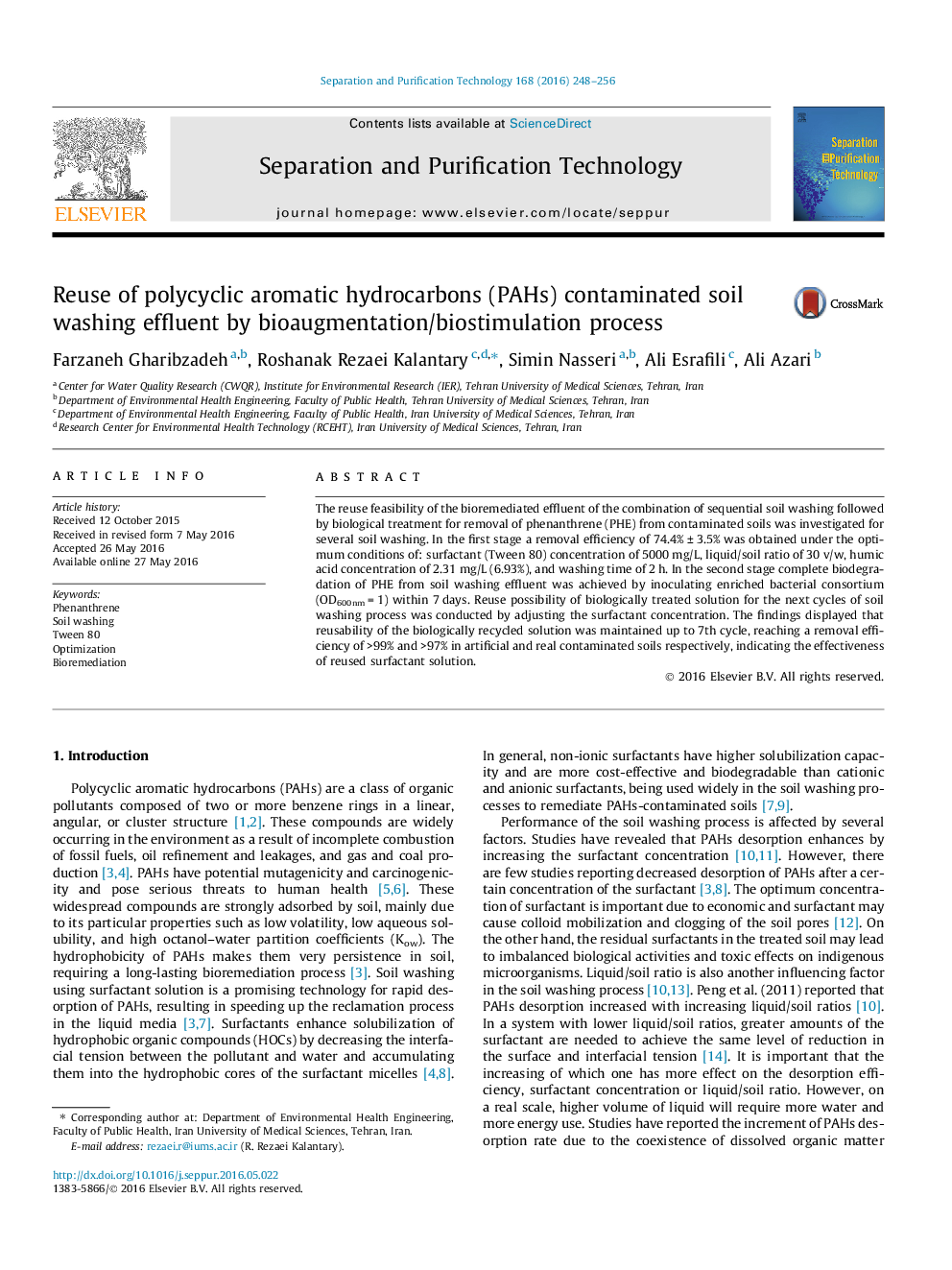| Article ID | Journal | Published Year | Pages | File Type |
|---|---|---|---|---|
| 640064 | Separation and Purification Technology | 2016 | 9 Pages |
Abstract
The reuse feasibility of the bioremediated effluent of the combination of sequential soil washing followed by biological treatment for removal of phenanthrene (PHE) from contaminated soils was investigated for several soil washing. In the first stage a removal efficiency of 74.4% ± 3.5% was obtained under the optimum conditions of: surfactant (Tween 80) concentration of 5000 mg/L, liquid/soil ratio of 30 v/w, humic acid concentration of 2.31 mg/L (6.93%), and washing time of 2 h. In the second stage complete biodegradation of PHE from soil washing effluent was achieved by inoculating enriched bacterial consortium (OD600nm = 1) within 7 days. Reuse possibility of biologically treated solution for the next cycles of soil washing process was conducted by adjusting the surfactant concentration. The findings displayed that reusability of the biologically recycled solution was maintained up to 7th cycle, reaching a removal efficiency of >99% and >97% in artificial and real contaminated soils respectively, indicating the effectiveness of reused surfactant solution.
Related Topics
Physical Sciences and Engineering
Chemical Engineering
Filtration and Separation
Authors
Farzaneh Gharibzadeh, Roshanak Rezaei Kalantary, Simin Nasseri, Ali Esrafili, Ali Azari,
